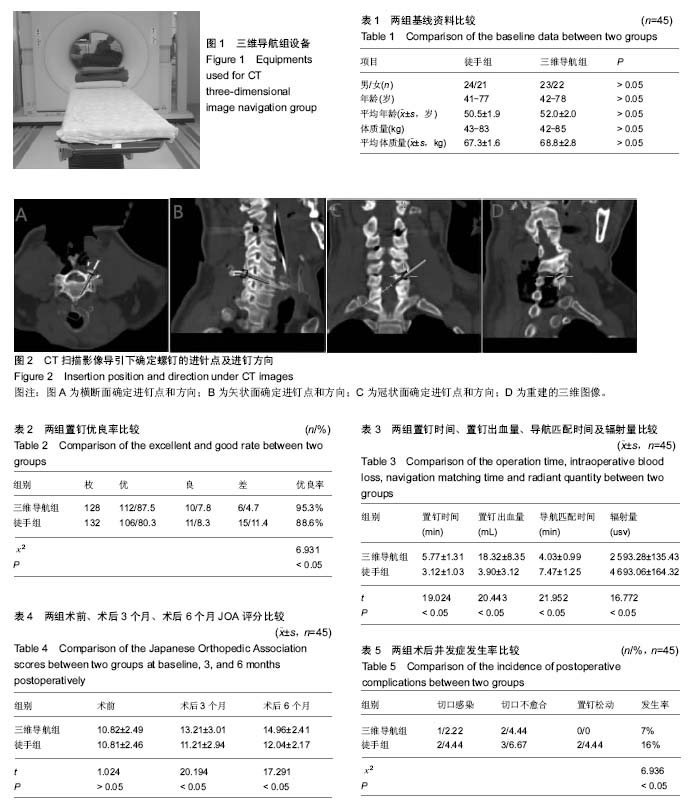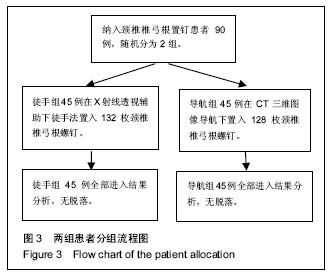| [1] 管俊杰. 数字化导航辅助颈椎椎弓根螺钉置入提高置钉准确率及安全性:随机对照临床试验方案[J]. 中国组织工程研究,2016, 20(39):5898-5903.[2] 楚晓丰,阮洪江,姚束烨.关节镜辅助下微创手术治疗胫骨平台骨折[J].中国矫形外科杂志,2012,23(4):374-375.[3] Zhu Y,Yang G,Luo CF,et al.Computed tomography-based Three -Column Classification in tibial plateau fractures:introduction of its utility and assessment of its reproducibility.J Trauma Acute Care Surg. 2012;73(3): 731-737.[4] 刘宗超,蒋燕,杨家福,等.有限内固定结合外固定支架与钢板治疗胫骨平台骨折的疗效分析[J].中国矫形外科杂志,2012,20(6): 505-508.[5] 巴雪峰,孙改生,凯瑟尔,等.胫骨平台骨折的治疗新进展[J].中国矫形外科杂志,2012,20(12):1104-1107.[6] Chang SM,Zhang YQ,Yao MW,et al.Schatzker type Ⅳ medial tibial plateau fractures:a computed tomography -based morphological subclassification.Orthopedics. 2014; 37(8):699-706.[7] 冯涛.胫骨平台骨折38例关节镜及C形臂X线机微创治疗的临床研究[J].中国内镜杂志,2014,20(11):1195-1200.[8] 张峻玮,孙磊,毕宏政,等.胫骨平台骨折的手术治疗进展[J].中国矫形外科杂志,2014,22(14):1280-1283.[9] 赵刚,和桓德,陈朝伟,等.复杂胫骨平台骨折的手术治疗[J].中国矫形外科杂志,2014,22(20):1902-1905.[10] Zou H,Ma X,Tang C,et al. Biomechanical study on a novel injectable calcium phosphate cement containing poly (latic-co-glycolic acid)in repairing tibial plateau fractures[J]. Zhongguo Xiu Fu Chong Jian Wai Ke Za Zhi. 2013;27(7) : 855-859.[11] 许振波,李强,胡敦祥,等.三钢板内固定治疗复杂胫骨平台骨折[J]. 江西医药,2013,48(12): 1200-1202.[12] Dodd A,Oddone Paolucci E,Korley R.The effect of three- dimensional computed tomography reconstructions on preoperative planning of tibial plateau fractures:a case -control series.BMC Musculoskelet Disord. 2015;16(6): 144-149.[13] de Lima Lopes C,da Rocha Candido Filho CA,de Lima E Silva TA,et al. Importance of radiological studies by means of computed tomography for managing fractures of the tibial plateau.Rev Bras Ortop. 2014;49 (6):593-601.[14] 谢卫宁,杨英年,李华,等.AO/OTA 及三柱分型联合应用指导治疗累及后柱的胫骨平台骨折[J].中国骨与关节损伤杂志,2014, 29(10):1052-1053.[15] Patange Subba Rao SP,Lewis J,Haddad Z,et al.Three column classification and Schatzker classification:a three-and two-dimensional computed tomography characterization and analysis of tibial plateau fractures. Eur J Orthop Surg Traumatol. 2014;24(7):1263-1270.[16] Wang J,Wei J,Wang M.The distinct prediction standards for radiological assessments associated with soft tissue injuries in the acute tibial plateau fracture. Eur J Orthop Surg Traumatol. 2015;25(5):913-920.[17] 夏天,王雷,董双海,等.经椎间孔扩大减压结合改良经椎间孔腰椎椎体间融合术治疗退变性腰椎管狭窄症(22 例3年以上随访)[J].中国矫形外科杂志,2012,20(24): 2242-2245.[18] Jindal N, Sankhala SS, Bachhal V. The role of fusion in the management of burst fractures of the thoracolumbar spine treated by short segment pedicle screw fixation: a prospective randomised trial. J Bone Joint Surg Br. 2012;94(8):1101-1106.[19] 向志军,钟生才,林伟,等. 多节段开窗法在老年性退变性腰椎管狭窄症中的应用[J]. 中国矫形外科杂志,2012,20(9): 852-854.[20] 向俊宜,孟庆奇,赵文韬,等.后路椎弓根钉内固定结合单纯椎间植骨融合与椎间融合器治疗腰椎不稳的疗效比较[J].广东医学, 2012,33(22): 3423-3425.[21] 王治栋,朱若夫,杨惠林,等. 前路减压 Zero-p 椎间融合器与传统钛板联合 cage 融合内固定治疗脊髓型颈椎病的疗效比较[J]. 中国脊柱脊髓杂志,2013,23(5): 440-444.[22] KarakalA,Ceen B,Erduran M,et al.Rigid fixation of the lumbar spine alters the motion and mechanical stability at the adjacent segment level. Eklem Hastalik Cerrahisi. 2014;25(1): 42-46.[23] 周英杰. 腰椎融合与非融合在腰椎间盘突出症手术中的合理选择[J]. 中医正骨,2014,26(10): 3-6.[24] 毛克政,梅伟,王庆德,等. Dynesys 动态固定系统治疗单节段腰椎间盘突出症[J]. 中医正骨,2015,27(3):61-63.[25] 卫秀洋,董卫星,陈勇忠,等.腰椎后路单节段融合与非融合固定的对比分析[J]. 东南国防医药,2015,17(1):35-37.[26] Wang X,Pang X,Wu P,et al.One-stage anterior debridement,bone grafting and posterior instrumentationvs. single posterior debridement,bone grafting,and instrumentation for the treatment of thoracic and lumbar spinal tuberculosis. Eur Spine J. 2014;23(4): 830-837.[27] 秦毅,李勇,李振宇,等.微创后路固定联合前路病灶清除植骨融合治疗胸腰段脊柱结核[J]. 中国矫形外科杂志,2014,22(7): 659-661,667.[28] Mederos Cuervo LM,Reyes Perez A,Valdes Alonso L,et al. Coinfection of Mycobacterium malmoense and Myco-bacterium tuberculosis in a patient with acquired inmune deficiency syndrome.Rev Peru Med Exp Salud Publica. 2014;31(4): 788-792.[29] Pinheiro AL,Santos NR,Oliveira PC,et al. The efficacy of the use of IR laser phototherapy associated to biphasic ceramic graft and guided bone regeneration on surgical fractures treated with wire osteosynthesis: a comparative laser fluorescence and Raman spectral study on rabbits. Lasers Med Sci. 2013;28(3):815-822.[30] Schneider D,Weber FE,Grunder U,et al. A randomized controlled clinical multicenter trial comparing the clinical and histological performance of a new,modified polylactide-co-glycolide acid membrane to an expanded polytetrafluorethylene membrane in guided bone regeneration procedures. Clin Oral Implants Res. 2014;25(2):150-158. [31] Lang Z,Tian W,Yuan Q,et al. Percutaneous minimally invasive pedicle screw fixation for cervical fracture using intraoperative three-dimensional fluoroscopy-based navigation. Zhong Hua Wai Ke Za Zhi. 2015;53:752-756.[32] 刘博,孙永强,王同明,等. 三维重建可视化系统可增强下颈椎椎弓根钉置入的准确性[J]. 中国组织工程研究,2016,20(17): 24479-24485.[33] 宋西正,王文军,薛静波,等.经皮椎弓根螺钉内固定联合骶前间隙轴向椎间融合治疗L5椎体滑脱症[J].中国脊柱脊髓杂志,2014, 24(5):407-411.[34] 魏建新.半椎体脊柱侧弯后路矫形中横向连接装置作用的有限元分析[D].河北医科大学,2013.[35] Yang BP, Wahl MM, Idler CS, et al. Percutaneous lumbar pedicle screw placement aided by computer-assisted fluoroscopy-based navigation: Perioperative results of a prospective,comparative,multicenter study. Spine. 2012; 37(24): 2055-2060.[36] Rao PJ, Mobbs RJ. The “TFP”Fusion Technique for Posterior 360° Lumbar Fusion: a Combination of Open Decompression, Transforaminal Lumbar Interbody Fusion, and Facet Fusion with Percutaneous Pedicle Screw Fixation. Orthop Surg. 2014; 6(1):54-59.[37] Stauff MP,Freedman BA,Kim JH,et al. The effect of pedicle screw redirection after lateral wall breach - A biomechanical study using human lumbar vertebrae. Spine J. 2014;14(1): 98-103.[38] 陈为坚,段扬,林周胜,等.基于三维有限元法的腰椎动态稳定系统建立及生物力学行为初步分析[J].广东医学,2015,36(10): 1497-1499,1500.[39] 范子文,谢楚海,黄彦,等.三维CT重建辅助胸椎椎弓根钉置入的实验研究[J].现代医院,2012,12(1):16-19. |
.jpg)


.jpg)